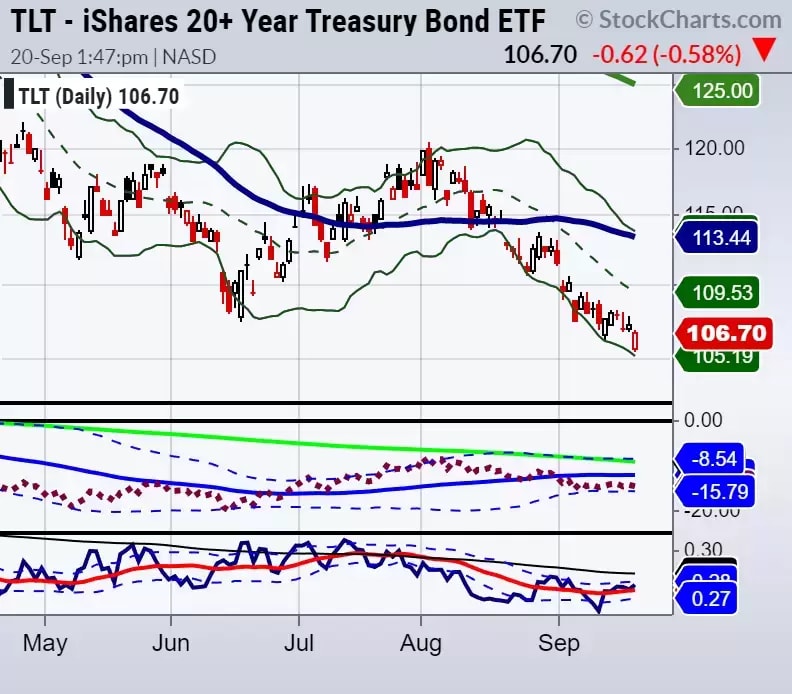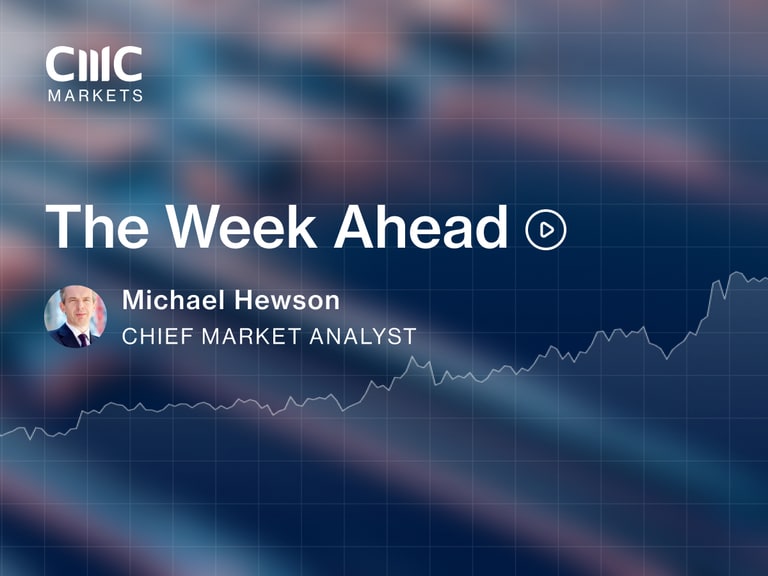
No doubt Wednesday's US Federal Reserve rate meeting is one of the more anticpated meetings of 2022. Following the recent consumer price index (CPI) and producer price index (PPI) numbers, we’re clearly a long way from the Fed’s 2% target for inflation. Therefore, the consensus view that the Fed plans to raise rates once more is almost unaninmous. The question though, is how much will rates actually be raised by?
How will indices react to US rates rises?
It will be interesintg to see how a 0.75 percentage point versus a 1.00 percentage point rise will affect stock indices. I have two theories on this. If the Fed raises by 0.75 points, the initial reaction might be a rally in indices. However, I believe an ensuing sell-off may still follow, as there are two more Fed meetings this year. The psychology among traders and investors could be one of fear, in the belief that the US central bank might continue to raise rates twice more.
In the second scenario, let’s say the Fed raises rates by 1.00 percentage point, the market’s immediate reaction could be a sell-off. Once this liquidation finishes though, the market may rally as the pervading psychology shifts to a more optimistic sense the Fed will not raise again this year.
Long bonds could provide a useful indicator
However it actually plays out, we find long-term bonds particularly useful and reliable as an indicator for short- and intermediate-term trades, even if Fed funds increase, and the yield curve widens. The 20+ year bond (TLT) has been beaten up quite a bit. As inflation reality has forced the Fed’s aggressive hand, the TLT has fallen around 30% since the start of 2022.
With a few positive technical notches on its belt, we’re looking at a potential bottom in long bonds. This doesn’t mean the yield curve won’t invert more as 2-year bonds (SHY) fall further. Yet, should equities continue their descent, long bonds may suddenly look more attractive as a safety play.
Long bonds are outperforming the S&P 500 on our Real Motion Indicator. When that happens, the big view illustrates a flight-to-safety sentiment towards long bonds. On the Real Motion indicator, TLTs made new multi-month price lows, yet momentum did not budge. This tells us that selling is losing mometum.

On Tuesday 20 September, the price sharply reversed from intraday lows. The prior low was made on 13 September at $106.24. With Tuesday’s close at $106.25 after ticking down to $105.40, we could look at this action as a potential move from the bottom. That gives us four general trading assumptions and options after the Federal Open Market Committee (FOMC) announcement.
1. If the long-bond yields softens, then the TLT may perform better. Generally, we like to wait until about 15 minutes after the annoucement to reset the daily range for a day trade. Therefore, once the trading range is established for that 15 minutes, we buy the breakout above the high of that range, or sell the breakdown below that range. We use a fairly tight stop, and use the momentum follow-through (assuming near-term volaitlity) to lock in profits.
2. With the same theory in mind, you can look at indices, or any instrument for that matter, and trade the 15-minute range breakout or breakdown.
3. In the intermediate term, should the TLT rally, it could be a relief for growth stocks and the NASDAQ. We would then look for stocks that have generally outperformed in this mess, such as Netflix [NFLX], or the Utilities Select Sector SPDR Fund [XLU], and potentially look to go long.
4. Staying in the intermediate term, should the TLT continue to head south, we might look to buy an UltraShort ETF tied to US indices, such as the ProShares UltraShort S&P500 [SDS], or SPDR S&P 500 ETF Trust [SPY], and anticipate a leg lower, but be willing to take a profit if conditions became oversold.
We will of course be watching the US dollar, gold, oil and food commodities in particular. All of these instruments could be impacted by the Fed’s decision.
In 2020, when Covid-19 struck, the TLT was the place to park your money. In 2022, the TLT suggested growth stocks were best avoided. That is why we find it extremely helpful to have eyes focused on one major area tied directly to investor sentiment, and then act accordingly
ETF summary
S&P 500 (SPY) 380 is a big area of support to hold. A break above 390 equals relief.
Russell 2000 (IWM) Still holding above the 177 support area.
Dow (DIA) 301-310 is the range now – until that changes, this still is a trading range market.
Nasdaq (QQQ) Tuesday's trading range is inside Monday’s range.
Regional Banks (KRE) Over the 50-DMA, making it a good outperformer.
Semiconductors (SMH) SMH is also inside Monday’s trading range, making 200-206 a key range.
Transportation (IYT) 213-220 is the range where we might see the worst impact.
Retail (XRT) The consumer is definitely in the line of fire if XRT clears 62.15. If the price is under 60.00, this reduces the potential impact.
Mish Schneider is MarketGauge’s director of trading education and research. Read more of MarketGauge’s market analysis here, and subscribe to their YouTube channel here. Mish Schneider's and MarketGauge's views and findings are their own, and should not be relied upon as the basis of a trading or investment decision. Pricing is indicative. Past performance is not a reliable indicator of future results.
Disclaimer: CMC Markets is an execution-only service provider. The material (whether or not it states any opinions) is for general information purposes only, and does not take into account your personal circumstances or objectives. Nothing in this material is (or should be considered to be) financial, investment or other advice on which reliance should be placed. No opinion given in the material constitutes a recommendation by CMC Markets or the author that any particular investment, security, transaction or investment strategy is suitable for any specific person. The material has not been prepared in accordance with legal requirements designed to promote the independence of investment research. Although we are not specifically prevented from dealing before providing this material, we do not seek to take advantage of the material prior to its dissemination.























